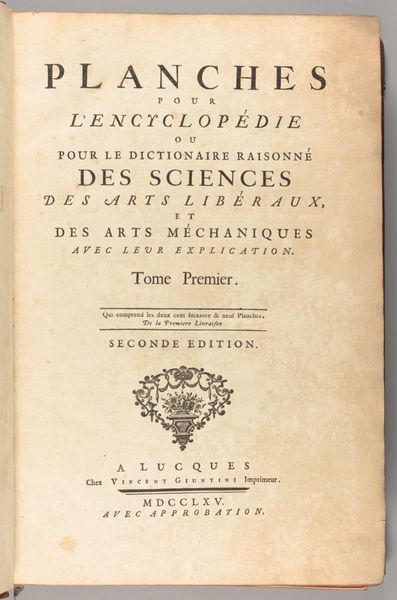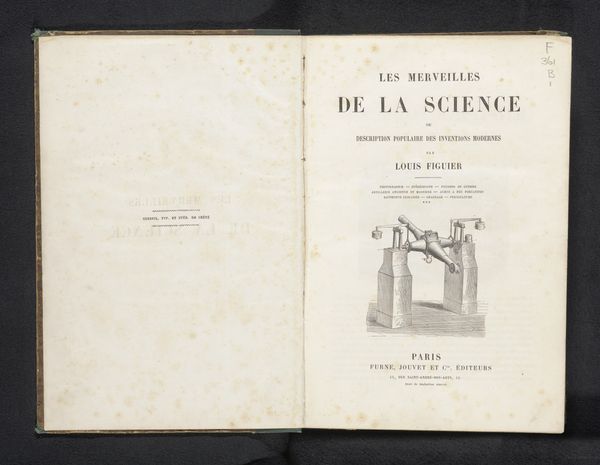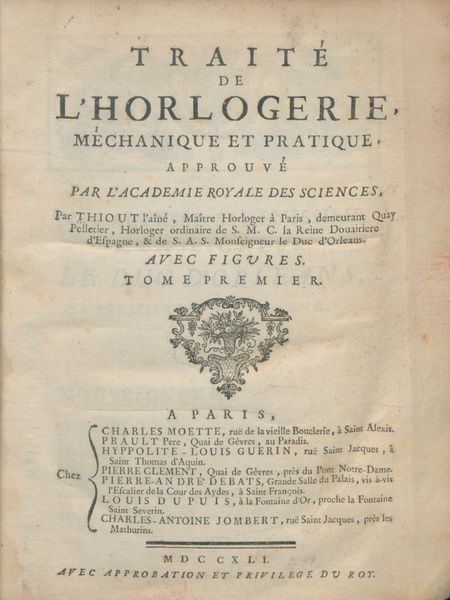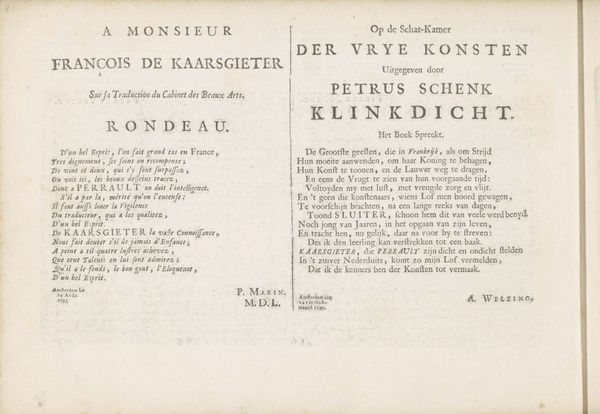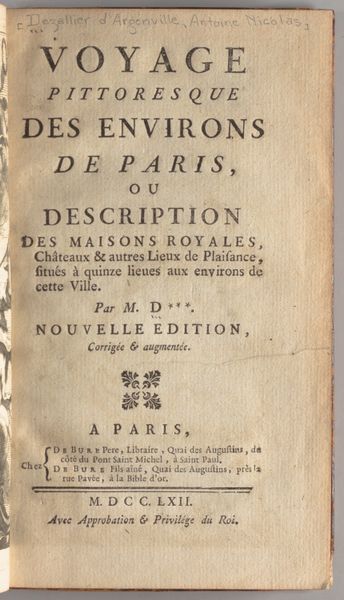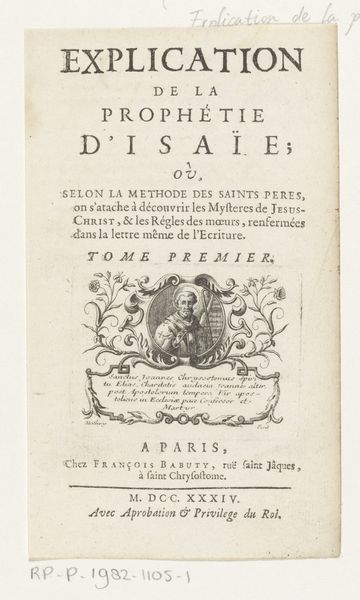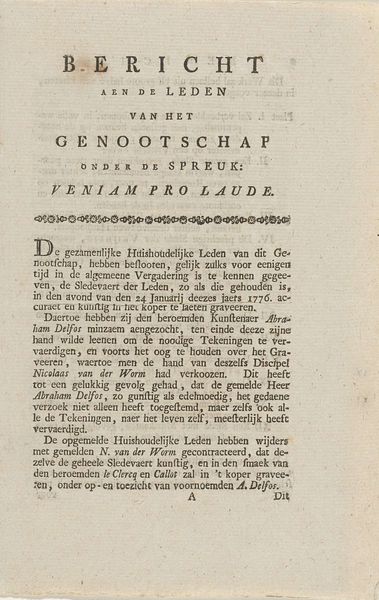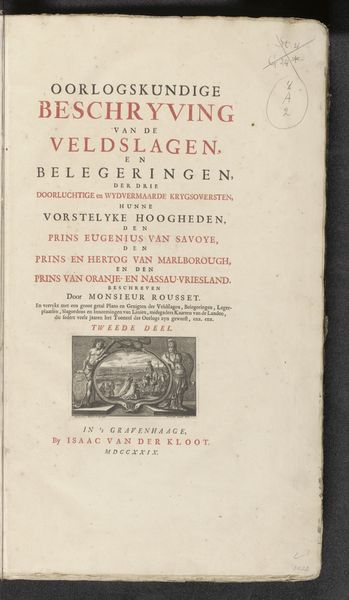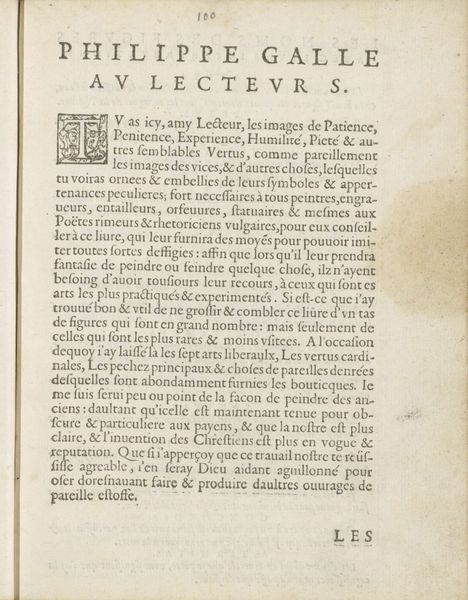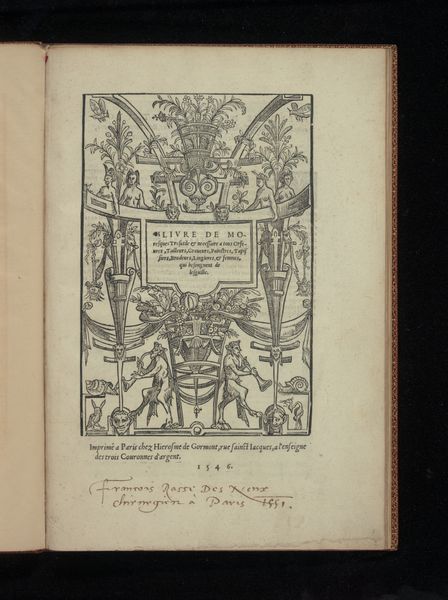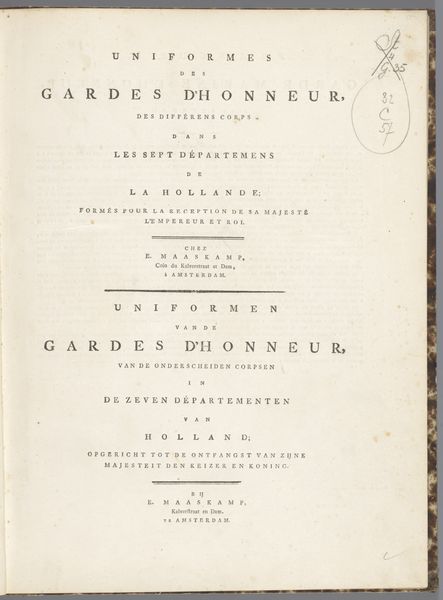
Encyclopédie, ou Dictionnaire raisonné des sciences, des arts et des métiers, par une société de gens de lettres 1758 - 1771
0:00
0:00
Dimensions: 17 volumes, illustrations, height: 16 9/16 in. (42 cm)
Copyright: Public Domain
Curator: My first impression is one of ornate rigor, a sort of poised energy waiting to be unleashed from the page. Editor: Indeed. What we're looking at is the title page to the first volume of Denis Diderot's Encyclopédie, published between 1758 and 1771. The original edition was a monumental undertaking reflecting the spirit of the Enlightenment. This copy is housed at the Metropolitan Museum of Art. Curator: The lettering itself commands attention, doesn’t it? Each word stacked with almost architectural precision—ENCYCLOPEDIE—the most prominent, like a keystone, followed by meticulously organized rows of text, cascading down the page. Even the imprint information at the very bottom adheres to this disciplined design. Editor: And within that order lies revolutionary potential. Diderot's work aimed to collect and disseminate all available knowledge. Consider the engraved image at the center. How do you read its iconography? Curator: It presents a visual allegory, I think, for the unveiling of truth. Figures emerge from the shadows, bathed in light. They're classical, evoking the timelessness of knowledge, and appear in almost revelatory poses. Notice the feminine figures – a visual suggestion of the allegorical figure of Reason? Editor: Possibly, but look closely. There is, in the composition itself, a carefully planned hierarchy, not just a 'revealing', but almost a calculated control. It hints at the immense power knowledge grants—the figures seem almost…staged, intentionally arranged. What does that signify, I wonder? Curator: Well, perhaps the age itself was trying to navigate that balance—between liberation and structure, reason and faith. Knowledge had the potential to be either disruptive or harmonizing, so perhaps there is something more at play, like a quest to impose order in an ever changing world. The symbols of the old classical thinking given new meanings for an uncertain age. Editor: Precisely. So this page serves not only as an entrance to accumulated knowledge, but as a symbolic testament to the tensions inherent in organizing that knowledge. Curator: It is more than just a book’s title page. It becomes a gateway into a mind, a mission, and an era caught between tradition and innovation.
Comments
No comments
Be the first to comment and join the conversation on the ultimate creative platform.
